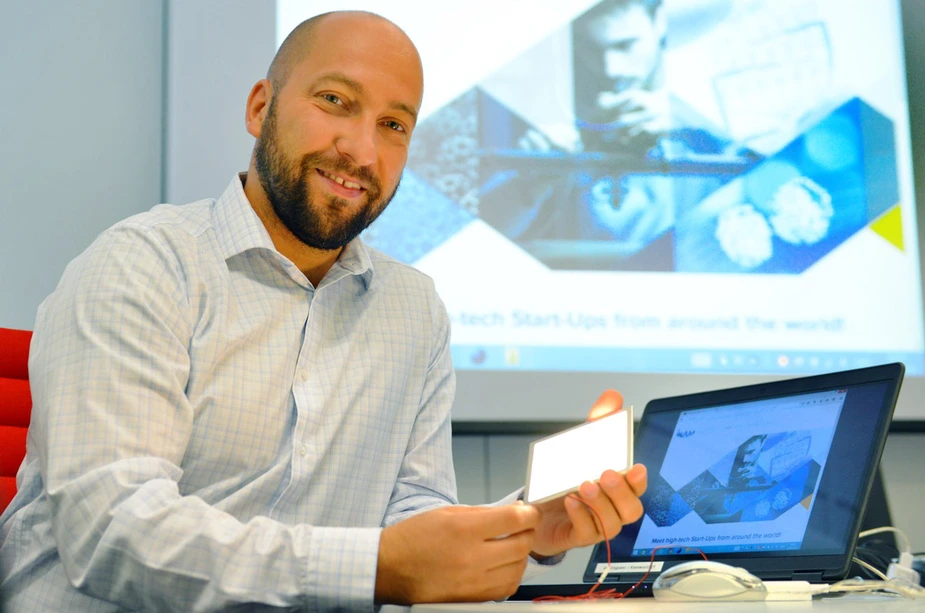Of movers, makers, and mentors
“Advanced Material Competition” – an international competition for startups specialising in high tech products
LEDs, or light emitting diodes, that are so thin that they can be applied to paper and packaging supply the light for prints and slogans. These and other new products are based on research into new materials. With a view to speeding up the transfer of research findings to the industrial field, the Innovation Network for Advanced Materials (INAM) in Berlin-Adlershof launched an accelerator programme that received applications from startups all over the world.
Material research relevant to the field – What sounds so simple presents a wealth of facets. As a means to promote ideas, the Advanced Material Competition (AdMaCom) was called into being in the summer of 2016 in Adlershof, an international competition for startups specialising in high tech products. “We unite research and business and are seeking startups with marketable product ideas whose potential we explore jointly,” explained Danny Krautz, Photonics Project Manager at Berlin Partner, continuing with obvious pleasure: “Applications for the competition came from all over Europe.” Also Brazil and the USA were among the interested parties.
“This is also to help us achieve better national visibility of material research at the Adlershof location,” he concluded. Krautz himself has spent more than enough time in material research to know that close cooperation between research and industry is a key prerequisite for the development of new products.
The six week programme AdMaCom brings together company and startup teams representing innovative ideas and great market potential with researchers and select international mentors. Training courses and workshops offer these teams and startups advice on their course towards developing new innovative products and processes. Over the summer, young entrepreneurs can discuss their ideas with experts from industry. Fifteen selected startups will be provided with laboratories and materials to elevate their products to the next level. Yet another special feature of this accelerator programme, unlike others of its kind, is that the participants are not compelled to cede company shares and are given the opportunity to present their ideas at leading exhibitions in the sector like EOSAM or Microphotonics 2016.
Which of these will prove especially promising cannot be predicted today. They could be ideas for displays, batteries, or photovoltaics. Also conceivable are innovative fibres or example applications for printable electronics. “In the ideal case, we shall experience the birth of all-new products,” said Danny Krautz with hope.
By Chris Löwer for Adlershof Special
